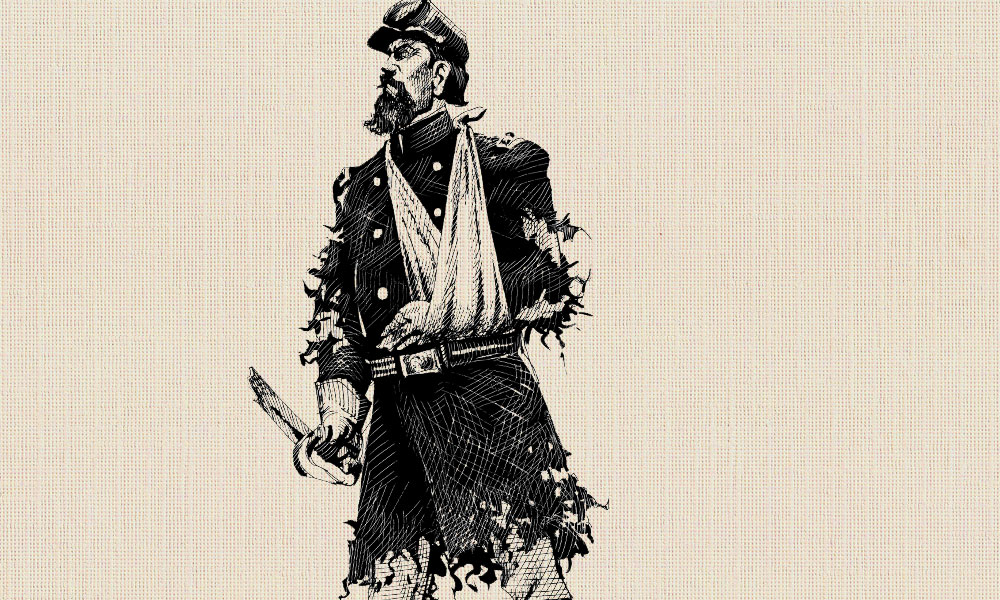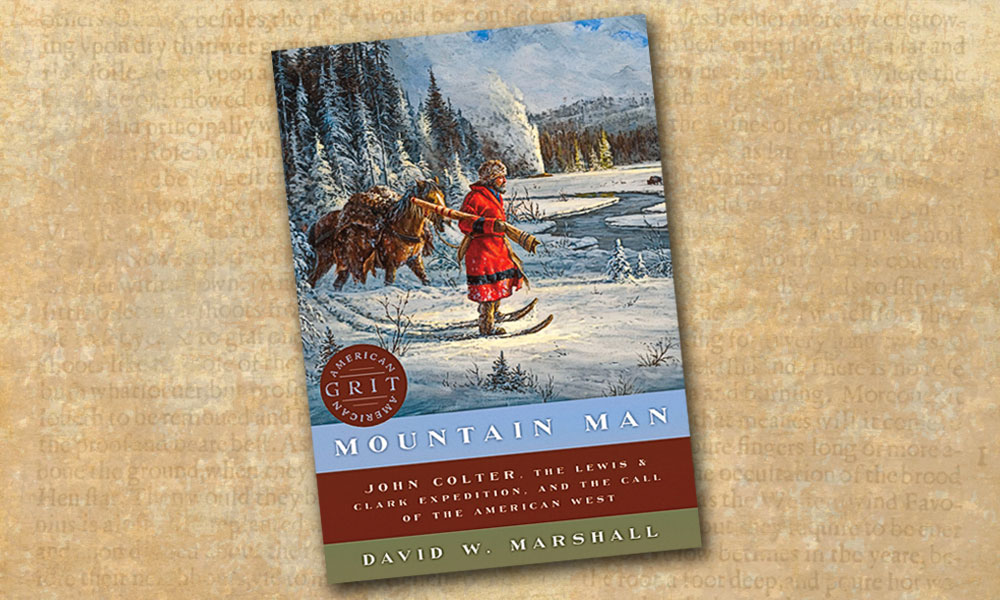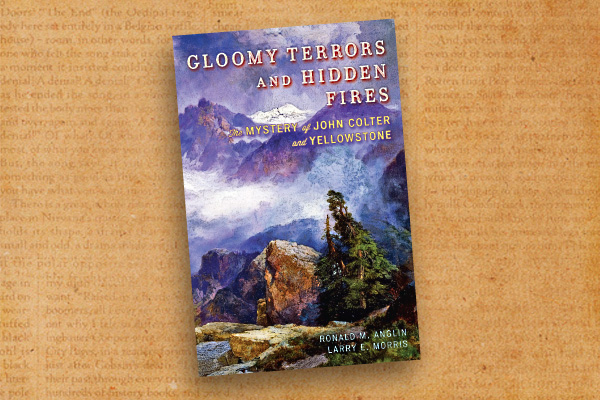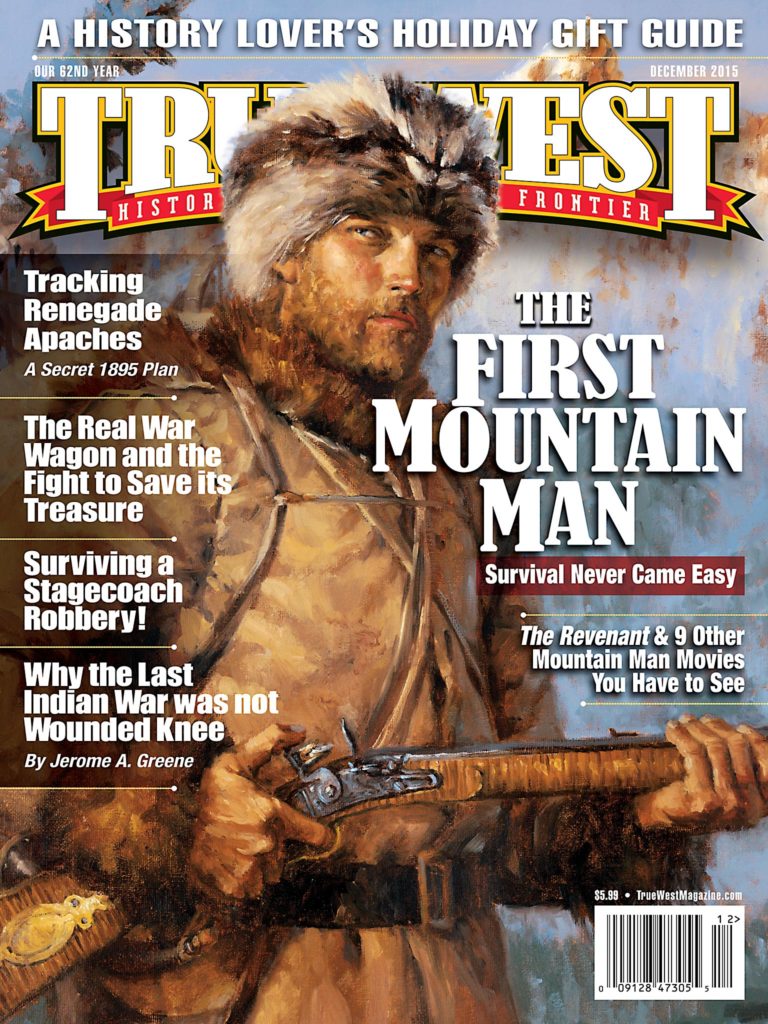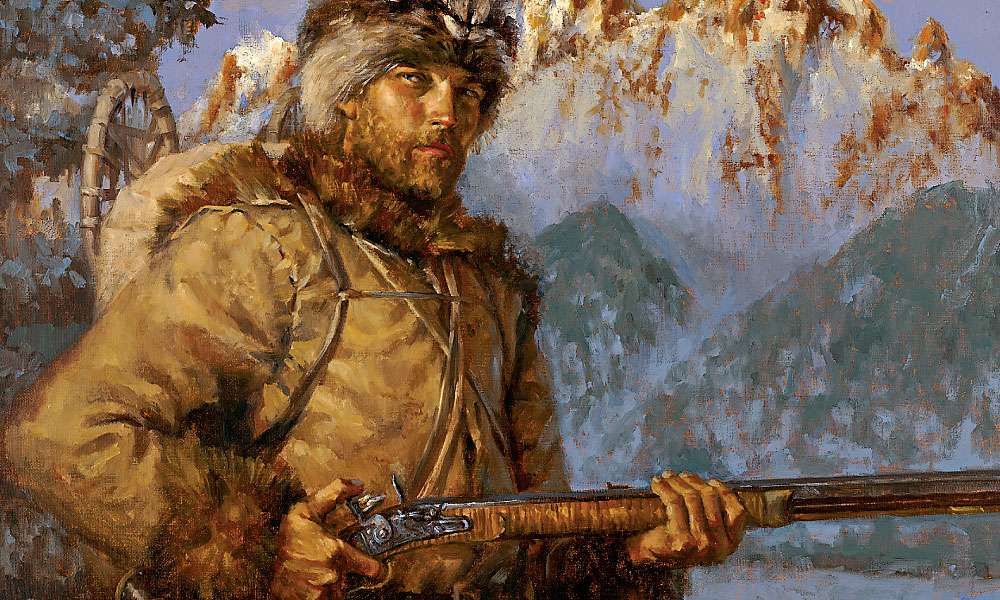
John Colter was a good hunter, a skilled woodsman, got along well with Indians and had a knack for surviving hazards and hardships that put other men under the ground.
There, in the villages of the Mandan Indians on the Missouri River, in 1806, he was headed back to St. Louis, Missouri, and civilization, along with the other men of Meriwether Lewis and William Clark’s Corps of Discovery. They had done wonders. Crossed the continent to the Pacific Ocean. Seen and mapped a huge swath of northern Rocky Mountains. Parsed out a route across the Continental Divide and marked it down. Recorded the route of the Columbia River to the sea. Lived off the land the entire way. And gotten along well with almost all the Indians.
These men were ready for St. Louis, for the food they had grown up with, for whiskey (Colter was fond of whiskey), for women, for company. And for accolades. Hell, they were heroes.
But Colter was different. He couldn’t make a map, but he didn’t need one. He had an eye and a memory for the ridges of the Rocky Mountains and the wild rivers that cut them into their crazy-quilt shapes. He liked to spend his days alone, hunting, seeing, learning. And he had no yen for what the civilized world offered him.
He must have seen something back in those wild mountains, sensed something. Being a man of few words, he probably couldn’t explain, or had no inclination to. A love of adventure? A taste for the thrill of danger? A yearning to see what was over the next ridge? An addiction to feeling the rush of blood, which rose to the challenge of do or die?
All he knew was that he wanted more of what was behind him, much more.
A risk to his life? Or were those mountains and rivers the only life for him?
We can’t find out from Colter. From what the record shows, he never spoke his passion for the wild life.
Eschewing Civilization
Now, at the Mandan villages, he was faced with a big decision. He met two would-be trappers he knew nothing about, except that they had no idea about the country they were headed for, no clue about the raw risks that lay ahead and almost none of the skills they would need to succeed as trappers, or even come out of the mountains alive.
These innocents asked Colter to come along. They tried to tempt him by saying they would make a fortune trapping beaver.
At least they had shown sense in one way. They were recruiting one of the handful of men who knew the country upriver. No one knew more than Colter.
He asked Clark and Lewis for early release from his soldier’s duties. The captains judged that Colter had performed so well that he deserved to do whatever he liked. So they gave their blessing, and he headed back up the Missouri River.
The next spring, 1807, he canoed back downriver without his companions. (No one knew what happened to them.) Far downriver, he spotted keelboats and five dozen men overhauling them. The expedition was outfitted and bossed by a Spaniard, Manuel Lisa, another greenhorn. But among the laborers were some of his old companions from the Corps of Discovery. All were headed back to the Shining Mountains, as they called the Rocky Mountains, to get that beaver.
For Colter, the decision was simple. He turned around and headed back to the high country. Based on his greater knowledge of the country, he led the expedition away from the Missouri River to the mouth of Big Horn River, where the friendly Crow Indians lived.
Lisa’s plan was less to trap beaver than to trade for their hides, so he built a fort at the mouth of this river. Then he dispatched one of his most experienced men into the surrounding country to inform the Indians that he was willing to trade. Inevitably, he sent Colter.
Journey Through Colter’s Hell
Going alone must have been fine with Colter. With a 30-pound pack and a rifle, he went up the Big Horn River, then up the Wind River and over a high pass into Jackson Hole. He was the first white man ever to see that magnificent valley, watered by the Snake River and rimmed on the west by the lofty Tetons.
Then he wandered upstream into Yellowstone Country and saw the geysers and hot springs. When he told about that country of fiery waters, some of his comrades didn’t believe him. They gave the region that would become Yellowstone National Park the name Colter’s Hell.
From there, he made his way, perhaps down the Yellowstone River, to the Big Horn and back to Lisa’s fort.
A look at a map will make any modern reader gasp. Colter made a circle of about 500 miles through the northwest corner of Wyoming, the state’s highest and wildest region. He did it through the dead of winter, and alone.
He must have stayed in many Indian camps, spreading the word of the chance to trade. He had no trouble with the native people, because he brought no trouble and treated them as friends. Only the arrival of the emigrants, more than 30 years later, would make the troubles boil up, because they treated the Indians as inferiors.
Colter got back to Lisa’s fort in the spring of 1808, reported to him and then headed out to tell more tribes about the fort. Bad luck: His traveling companions, Flatheads and Crows, ran into a bunch of enemies, Blackfeet.
Making Enemies
In the ensuing fight, Colter naturally fought with his companions, and they drove off the Blackfeet. Unfortunately, he was shot in one leg, and, worse, the Blackfeet noticed the white man and put him on their enemies list.
After Colter recovered, he and a companion named Potts (possibly John Potts, who had also participated in the Lewis and Clark expedition) went on a fall beaver hunt and bumped into an entire tribe of Blackfeet. When the warriors ordered the whites to bring their canoes to shore, Colter did. Expecting only to be robbed, he slipped his traps into the water.
Resisting, Potts shot and killed a Blackfeet. At that point, a volley from the Indians killed him. Then they hacked up the corpse and threw pieces in Colter’s face.
The Blackfeet stripped Colter naked and took his weapons. He expected to be killed immediately, or perhaps tortured by the women and killed. But no. After a council, they told Colter they would give him a head start; he could run for his life.
At first, he walked, listening for the warriors to start running after him. As soon as he heard their whooping, he sprinted like a lunatic. A powerful man, he gradually pulled away from his pursuers. But he knew he had no chance on land—he needed to get into the Madison River, five miles away, and hide in the water.
Then he saw that his chest and legs were crimson. Blood was spouting from his nose. He looked back. Only one Indian was close to him.
Colter made a quick decision. He whirled on the man, challenging him. The Blackfeet charged, his spear raised. Colter grabbed the spear. When he twisted it, the spear broke, leaving the point and part of the shaft in Colter’s hands. The Indian fell onto his back. Colter drove the head through the Blackfeet’s body, took his blanket and ran again.
When Colter got to the river, he saw a lot of driftwood stranded on a sandbar or an island. He dove in, gasped at the painful cold of the snowmelt water and made for the driftwood.
Diving underneath, he struggled until he found a place to get his head up into the air. There in the darkness, freezing, he stayed.
The Blackfeet tramped up and down the banks, looking for tracks where he had left the river. They climbed out onto the driftwood. But they didn’t find him. Finally, they gave up.
Colter was 200 miles from the fort and faced a nightmare. He was naked, except for a blanket, and unarmed. As he walked, his feet were torn by cactus and rocks. He had nothing to eat but bark and roots.
Eleven days later, barely alive, he got to the fort. Traveling constantly, day and night with only short rests, starving, he had averaged nearly 20 miles a day.
When he recovered, he went back to where he had dropped the traps. They were worth $10 apiece, several hundred dollars in today’s money.
The Blackfeet crept up on him at his campfire. Hearing their approach, he scurried into the dark.
When he got back to the fort, he “promised God Almighty that he would never return to this region again if he were only permitted to escape once more with his life.”
Forgetting His Promise
In early summer of 1809, the men closed the fort and headed downriver. Riches? For their two years’ work, they had only 15 beaver skins and 10 buffalo hides.
At the Mandan villages in September, fate whacked Colter again. He met Lisa coming back upriver with 150 men and tons of trade goods.
Colter promptly forgot his vow and went back to the mountains with this formidable force. At least the fort on the Big Horn was far from Blackfeet Country.
But Lisa’s great aim was to establish a fort at the Three Forks of the Missouri, the heart of Blackfeet territory.
The next spring, 1810, Colter found himself guiding a crew of 80 men to the Three Forks. While they were throwing up a stockade, Colter led a group of 18 up the Jefferson River to trap. After 10 miles, they were attacked by Blackfeet. They were robbed of almost everything; two men were killed, and three others were missing.
Colter was convinced, at last, that the Blackfeet were his personal devils. When he got back to the fort, he threw his hat on the ground and announced, “Now if God will only forgive me this time and let me off I will leave the country day after tomorrow—and be damned if I ever come into it again.”
He got out, carrying a letter down to St. Louis stating the country was full of beaver, but that getting them was a perilous endeavor. Unless peace could be made with the Blackfeet, or the Indians could be destroyed, trapping and trading were impossible.
Colter also helped Clark fill out his map of the northern Rockies. Then he married, fathered a son and devoted himself to farming.
One Last Chance
The next year, fur trappers from John Jacob Astor’s expedition stopped to pick the brain of the man who knew the country of the high Missouri and the Yellowstone like no other. They also invited him to come along.
Naturally, Colter wanted to go. Life in the settlements was safe, he must have thought, but boring. He longed for adventure.
Still, he had a new wife and new son. He stayed.
Two years later, still in his 30s, the first mountain man died of jaundice, far from his real home.
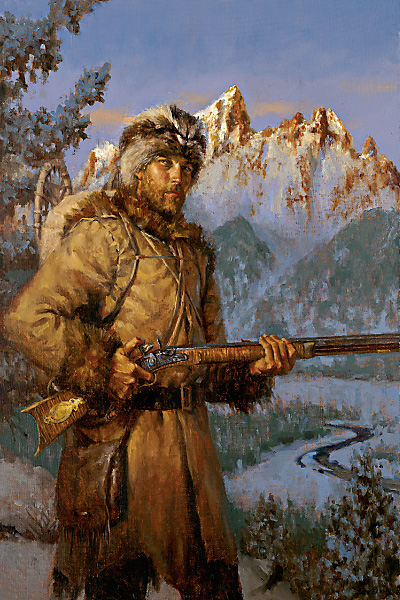
– Illustrated By Andy Thomas –
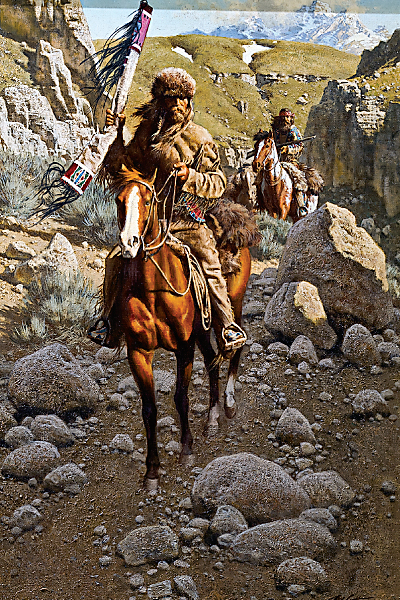
– Courtesy Tim Peterson Family Collection, Scottsdale’s Museum of the West –
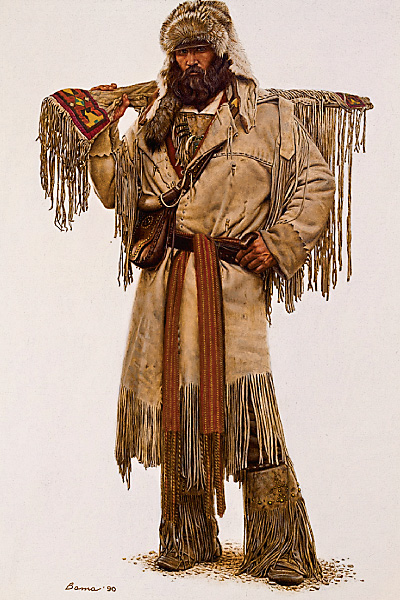
– Courtesy Tim Peterson Family Collection, Scottsdale’s Museum of the West –
Win Blevins is the author of numerous historical novels, including Give Your Heart to the Hawks. (Visit MeredithAndWinBlevins.com) In 2015, he won the Owen Wister Award, for lifetime achievement in writing literature of the West, from Western Writers of America. He lives with his wife, novelist Meredith, among the Navajos in San Juan County, Utah.


